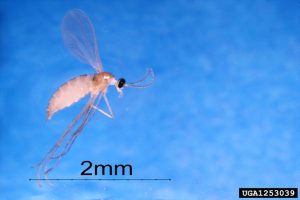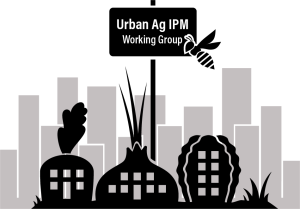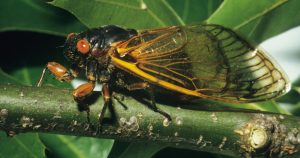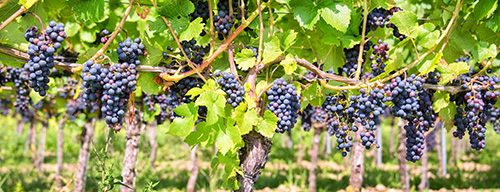News stories shared in the April 2024 Central Issue appear below. Subscribe to receive the Central Issue newsletter monthly via email.
North Central IPM Center Updates
Inclusive Integrated Pest Management Projects Funded
Funding has been awarded to support four innovative projects that will increase diversity, equity, inclusion and accessibility (DEIA) in integrated pest management. Projects range from providing DEIA training to providing beekeeping education at correctional facilities.
Urban Agriculture Integrated Pest Management Webinars
The Great Lakes Urban Agriculture Working Group held three webinars early in 2024 to address specific pest topics relevant to urban areas.
The first webinar featured Mary Rogers, associate professor from the University of Minnesota. Dr. Rogers covered swede midge, an invasive pest specializing in brassica crops, including midge population distribution, details about the midge’s life cycle, signs of swede midge damage, and management recommendations.

Jacqueline Kowalski, associate extension educator at University of Connecticut spoke about ethnic crops during the second webinar. Dr. Kowalski shared opportunities and challenges associated with niche crops that are gaining traction in mainstream markets and are already widely grown in some communities of the United States.
In the third webinar, two speakers talked about opportunities for scouting and trapping insects on urban farms. Sam Anderson, urban agriculture specialist at Cornell Cooperative Extension talked about how to look for a variety of insect pests on urban farms. Elizabeth Lamb, adjunct assistant professor at Cornell University, shared details about types of traps and what they catch along with another method to protect your crops.
May Webinar: Urban Farm Resources Developed by the Great Lakes Urban Ag Working Group
 Join Margaret Rivera, agriculture and natural resource educator with Ohio State University Extension, and Dr. Laura Ingwell, assistant professor of horticulture extension entomology at Purdue University as they share opportunities for urban agriculture. Dr. Ingwell and Rivera co-lead the Great Lakes Urban Ag IPM Working Group to help growers solve production and pest challenges on urban farms.
Join Margaret Rivera, agriculture and natural resource educator with Ohio State University Extension, and Dr. Laura Ingwell, assistant professor of horticulture extension entomology at Purdue University as they share opportunities for urban agriculture. Dr. Ingwell and Rivera co-lead the Great Lakes Urban Ag IPM Working Group to help growers solve production and pest challenges on urban farms.
Register now to receive the webinar link. This webinar will be held on Wednesday, May 15 at 1:30 pm ET (12:30 pm CT). “Pests and Progress” webinars are free, and more details are on the North Central IPM Center website.

War Against Weeds Podcasts
- Crop Injury
Interviewee: Bryan Young, professor of botany & plant pathology at Purdue University - Herbicide Carry Over
Interviewee: Kevin Bradley, state extension weed scientist and professor, University of Missouri - A Conversation Between Plants
Interviewee: Clarence Swanton, professor emeritus, weed scientist at the University of Guelph - A Canadian Perspective on Harvest Weed Seed Control
Interviewee: Breanne Tidemann, research scientist with Agriculture and Agri-Food Canada - Weed Control in Mint
Interviewees: Stephen Meyers, assistant professor from Purdue University, and Dr. Pete Berry, assistant professor Oregon State University.
New Episodes—I See Dead Plants Podcasts
In this three-part podcast, interviewee Kephas Mphande, recent PhD graduate from Iowa State University shares research on cucurbits, specifically cucurbit yellow vine disease or CYVD.
US Environmental Protection Agency Updates
EPA Publishes Update on Herbicide Strategy Progress
The U.S. Environmental Protection Agency (EPA) had updated the draft Herbicide Strategy with improvements that are meant to increase flexibility and make implementation easier. The purpose of the Herbicide Strategy is to clarify which herbicides pose risk to species that are listed under the Endangered Species Act. The Strategy also provides a list of mitigation practices that allow the identified herbicides to be used while reducing impacts on wildlife and habitats.IPM Highlights

Please Share: Tick Resources
May is Lyme Disease Awareness Month, and ticks and tick diseases continue to infiltrate the North Central region. Please help increase awareness in the month of May by
- Sharing our recent Pests and Progress webinar about the Asian longhorned tick
- Using or mentioning the Ticks and Tick-Borne Diseases pest alert in your presentations (prints are available for free)
- Inviting your contacts to attend Tick Academy (October 16, 17, 2024). Registration coming soon.
Each of these topics has been shared on X already for your convenience. If you have tick resources that you are sharing in May, please tag us: @ncipmc.
The Cicadas are Coming!
There are 3,000 species of cicadas worldwide. Most are annual species with adults emerging late spring every year. However, there are seven species that are “periodical” and manage to extend their nymph stage for 13 or 17 years, depending on the species. This year is special because adults of two broods of periodical cicadas (Brood XIII, the Northern Illinois Brood with a 17-year life cycle and Brood XIX, the Great Southern Brood with a 13-year cycle) will emerge this year. For the most part, these populations will not emerge in the same locations; some overlap will be seen in Illinois, particularly around Springfield.
Learn more from the May 10 “Discover Live” webinar featuring PJ Liesch, extension entomologist from the University of Wisconsin-Madison. Liesch will discuss the cicadas life cycle, special traits and details about the 2024 cicada emergence. Here’s a few other ways to prepare for the 2024 cicadas:
- Citizen science opportunity, submit sightings of cicadas on X:@inaturalist. To help with ID, include a photo from the bottom and side (minimum); top, front and back may also be helpful.
- Cicada life cycle, podcast, handout, interactive lessons
- Cicada Safari: facts, map of 2024 broods, and activities
- Entomology Today article
- Time lapse video of cicada molting

After the Volts: Is Weed Electrocution Safe for the Soil?
Electricity can be used to kill weeds so how does weed electrocution affect earthworms, microbes and insects? Separate studies from the University of Missouri and Cornell University used two different weed electrocution products and evaluated impacts to earthworms, springtails, mites, soil microbes and even soybean cyst nematodes. No ill effects were found.
Preparing for Next Season
Illinois Residents Encouraged to Destroy the Eggs of Invasive Insects to Slow Spread
Both spotted lanternfly and spongy moth lay large clusters of eggs, and spring is the best time to destroy eggs before they hatch. Spongy moths can lay up to 1,000 eggs at a time, and they voraciously feed on a variety of hardwood trees like oaks. Spotted lanternflies prefer tree of heaven as a host plant but also feed on fruit trees like peaches, plums and cherries, grape vines and some hardwood species.

Impact of Water Quality on Pesticide Performance
Did you know that the water you use to spray pesticides can influence their effectiveness? Learn how to test your water and what water parameters matter in this publication from Purdue University called, “Impact of Water Quality on Pesticide Performance.” This topic is especially relevant in areas where you may need to use a new water source due to drought conditions.
Fungal Disease Management for Ornamental Plants
This webinar hosted by the US Environmental Protection Agency (EPA) will be held on Tuesday, May 7 at 2 pm ET (1 pm CT). Presenters Jean Williams-Woodward, PhD, (University of Georgia) and Marcia Anderson, PhD (EPA) will introduce common fungal diseases of ornamental plants and their prevention and management. Be sure to register.
Free Soil Health Assessment (IN)
A new project can help you! Free soil health assessments are available to certified organic farmers and to farmers who are transitioning their farm to organic methods. Indiana participants will receive a pre-paid soil sample kit to test for organic matter, pH, soil fertility, cation exchange capacity, water holding capacity, and soil health indicators. To participate, contact Dr. Yichao Riu at ruiy@purdue.edu (609-772-9278).
Highly Pathogenic Avian Influenza-2024 North Central Update
Highly Pathogenic Avian Influenza (HPAI), informally known as bird flu, has been found in a number of North Central states recently. There are active quarantines in Michigan, Minnesota, Kansas, New Mexico, Texas and Florida. A full list of confirmed cases and quarantine progress is summarized by USDA APHIS. This illness can affect a number of animals from wildlife to poultry, cows, pigs, and rarely dogs and cats if they eat an infected bird. Infections in people are more rare but typically come from interaction with infected poultry; it does not spread from person to person.
According to the American Veterinary Medical Association, symptoms in birds include sudden death with no prior signs, low energy or appetite, purple discoloration or swelling of various body parts, reduced egg production, soft-shelled/misshapen eggs, nasal discharge, coughing, sneezing, lack of coordination, or diarrhea.
In dairy cattle, symptoms include low appetite, reduced milk production, and abnormal appearance of milk (thickened, discolored). The illness is less deadly in cattle, but treatment is needed. The US Food and Drug Administration (FDA) monitors infected dairy cows and their milk to ensure that milk is safe for human consumption.
Reporting of suspected cases is mandatory. Your state’s department of agriculture will review reports of illness. Additional information for HPAI are available from most local extension programs like these resources from Minnesota.
Resources
Grape Production Resources for South Dakota
This list of resources provides information for establishing a vineyard in South Dakota, from site selection to choosing grape varieties and pruning resources.

New Resource Available for Crop Producers Transitioning to Organic: Transitional Production Plan
The USDA National Organic Program has created a new Transitional Production Plan (TPP) template. This template helps farmers who are transitioning to organic production document the details needed to qualify for Organic Transition Initiative services and help farmers take advantage of all USDA programs more easily.
Endangered Species Act and Pesticides: An Example
As the US Environmental Protection Agency works to add rules to some pesticides to protect species listed under the Endangered Species Act, many landowners have questions.
This webinar from the New York IPM Program includes answers to common questions like “When will changes happen,” “Will this affect my farm?” and “How do I prepare?” A specific pesticide example using Enlist one and Enlist Duo is explained. Check out this full webinar recording on the Center’s “Preparing for EPA Changes to Pesticide Rules; Protection for Endangered Species” page.
NEW Book – The Physician’s Guide to Delusional Infestation
We depend on our senses to give us important and accurate information about our surroundings. When someone experiences a “crawling” sensation on their skin, they become very motivated to make it stop. A new resource is available to help them. This new book, The Physician’s Guide to Delusional Infestation, is intended for physicians to help with diagnosis and treatment, but it also provides helpful insights for entomologists who respond to requests to identify the bugs invading the patient’s skin.
Events
National Plant Diagnostic Network 2024 National Conference
 The next National Plant Diagnostic Network National Conference will be held September 9 to 13 in Portland, Maine. The theme of the meeting is “Adapting to the Challenges of Change.” Registration is open; early bird rates are available through June 28th. More details are available on the event website.
The next National Plant Diagnostic Network National Conference will be held September 9 to 13 in Portland, Maine. The theme of the meeting is “Adapting to the Challenges of Change.” Registration is open; early bird rates are available through June 28th. More details are available on the event website.
American Phytopathological Society North Central Division Meeting
 The 2024 American Phytopathological Society (APS) North Central Division Meeting will be held June 10 to 12 in Manhattan, Kansas. Register by May 1 for the best rates; registration closes May 22.
The 2024 American Phytopathological Society (APS) North Central Division Meeting will be held June 10 to 12 in Manhattan, Kansas. Register by May 1 for the best rates; registration closes May 22.

